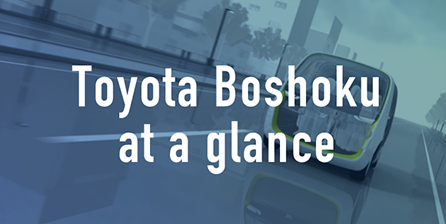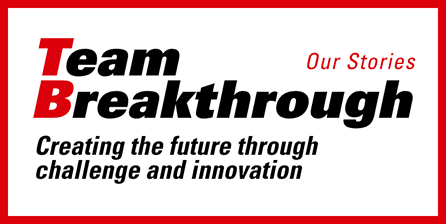Job Satisfaction and Employment
Basic Concept of Human Resources Management (HRM)
With a good relationship between labor and management as a vital foundation, Toyota Boshoku aims to both guarantee stable employment and to maintain and continue improving working conditions into the mid- and long-term future. We are working to ensure consistent and thorough communication between labor and management—including but not limited to labor-management meetings—with each sharing plans, issues encountered, and other relevant information to ensure that both are able to fulfill their respective responsibilities. In addition, Toyota Boshoku promotes the development of human resources by conducting evaluations that use standards reflecting our core values and also provides fair and equitable conditions for all members. Furthermore, we strictly respect the laws and social regulations of every country and region we operate in, whether they concern working hours, days off, wages, or other basic working conditions.

- Being in a good state physically, mentally, and socially, with individual rights and self-fulfillment ensured
Pursuing Ease of Working
We aim to enhance ease of working by creating a workplace in which company members can work happily and enjoyably, and by developing more flexible, efficient, and creative work rules.
Regarding to working hours, we strictly respect the Labor Standards Act (a law that governs working conditions in Japan), and make sure to carry out all legally mandated procedures in the event that a company member works longer than the designated duration of legal working hours. Additionally, from a health management perspective, we are aiming to curb long working hours by setting a target of "zero company members working overtime in excess of 540 hours per year (excluding managers and supervisors)."
As a specific measure to curb long working hours, at the company-wide level we are implementing the following:
(1) Document simplification activities
(2) Meeting streamlining activities
(3) Use of digital tools (e.g. robotic process automation (RPA))
In this way, we are promoting operational streamlining.
Furthermore, we are promoting flexible work styles by providing systems that allow company members to work without being restricted by time or place, such as coreless flextime (flextime without core hours) and teleworking systems.
We believe that these activities will contribute to the well-being of our company members. We will continue to engage in activities that promote physical and mental health and improve productivity and satisfaction.
Employee engagement
From fiscal 2025, we revamped our survey method from the previous employee survey to the Toyota Boshoku EX (Employee Experience) Survey, which enables analysis at each workplace and benchmarking against other companies. In addition, the positive response rate for employee engagement, which indicates the willingness to voluntarily contribute to the organization and to our performance goals, has been set as a KPI. By effectively linking employee feedback to human resource strategy, countermeasures, and workplace improvement, and by enhancing employee engagement, we will promote the creation of an open workplace in which company members with diverse values and perspectives can cooperate and grow together.
Employee engagement positive response rate [Toyota Boshoku]
![Graph:Employee engagement positive response rate [Toyota Boshoku]](/_assets/img/sustainability/social/employees/img2_03@global.svg)
Trend of annual paid holiday utilization rate
The paid holiday utilization rate has remained high, exceeding 95% in the most recent five-year period. In fiscal 2026, the company target continues to be 14 days of paid holiday per year or the non-elimination of accrued paid holiday (encouraging members to take paid holiday within the validity period) for union members, and 6 days of paid holiday per year for managers and supervisors, with labor and management working together to encourage the utilization of such leave.
Annual paid holiday utilization rate (%) [Toyota Boshoku]
![Graph:Annual paid holiday utilization rate (%) [Toyota Boshoku]](/_assets/img/sustainability/social/employees/img2_02@global.svg)
- Excluding members on leave and members on overseas assignment
- Ministry of Health, Labour and Welfare: General Survey on Working Conditions
- Please note that percentages shown may exceed 100%, as the total is calculated by dividing the total number of paid holidays taken in a year (including paid holidays carried over from the previous fiscal year), divided by the total allowance of paid holiday for this year only (i.e. not including paid holidays carried over from the previous fiscal year).
Wages
The Toyota Boshoku group respects the concept of equal pay for equal work and fully complies with minimum wage standards and other laws and regulations of each country and region. Management also confers with labor organizations to ensure wage levels support an adequate standard of living for company members and their families.
As part of our compensation system, Toyota Boshoku has introduced a performance-linked scheme in which bonus payment levels for manager (G3) and above are determined based on the company's performance in the previous fiscal year. Bonus payment levels for union members are also determined based on company performance, through labor-management discussions.
Bonus amounts are determined by reflecting the six-monthly performance of the individual's assigned duties in addition to company performance. By reflecting both company and individual performance in compensation, we aim to raise awareness of the need to improve performance and achieve goals, and to provide members with a sense of growth and motivation.
Retirement benefit system
Toyota Boshoku has established a lump-sum retirement benefit plan, a corporate pension fund plan, and a defined contribution pension plan. In the corporate pension fund plan, as well as lump-sum annuities and fixed-term annuities (15-year/10-year/5-year), which allow for a fixed period for receiving benefits, there is also the option of a 20-year guaranteed life annuity, which allows beneficiaries to receive an annuity for life and also allows their surviving family to receive an annuity even if they die within 20 years from the start of benefits. This helps to ensure the security and stability of company members' lives during retirement. The defined contribution plan also allows for the mobility of human resources by offering a choice of products and savings amounts, and the ability to take the plan with you even if you change jobs. Through these initiatives, we have put in place a system that allows members to play active roles at Toyota Boshoku over a long period of time with peace of mind.
Employees’ Shareholding Association
Our aim is to support company members in building long-term wealth, so as to achieve financial well-being. The Association launched in 1977 as a shareholding association of Toyoda Boshoku.
Funds are contributed from salary and bonus to purchase the Company's shares. Permanent company members and post-retirement rehired company members are eligible for this scheme. The incentive provided by the Company is 10% of the contributions, and the dividends are reinvested to fund the purchase of shares for each association member. In 2024, to commemorate the 20th anniversary of the three-company merger, all members were granted 20 shares per member. As of March 1, 2025, the participation rate was 58%.
Graduate and Mid-career Recruitment
New graduate recruitment
Our policy is to recruit highly capable individuals with diverse attributes and values in an active and stable, sustainable manner. We will also establish a recruitment framework by field and systematically develop individuals with aptitude after they join the company, building a system that will enable them to become an immediate asset.
In addition to the conventional method of assigning new members to the most suitable department based on their wishes and aptitude, we have introduced course-specific hiring, in which company members are assured of their initial post-joining assignment at the time of their job offer.
Mid-career recruitment
In order to achieve our Mid-Term Business Plan, we are hiring people with advanced specialized skills, such as digital transformation (DX) and environment-related technologies. In addition to agency recruitment and direct recruitment, we use referrals from company members and alumni hiring to efficiently hire talented people and people who are well versed in our culture and operations. Additionally, we are building an environment where the same opportunities for training and promotion are available to all company members, regardless of when or how they joined the Company. In the future, we will focus on implementing new initiatives alongside our regular work acquiring talented people with different backgrounds, experience, and knowledge, who can bring added value to our company’s business.
Number of persons recruited [Toyota Boshoku]
| Fiscal year | Unit | 2021 | 2022 | 2023 | 2024 | 2025 | ||
|---|---|---|---|---|---|---|---|---|
| Graduate recruitment | Administrative and engineering | Men | People | 88 | 58 | 80 | 135 | 153 |
| Women | People | 30 | 20 | 25 | 49 | 30 | ||
| Skilled | Men | People | 54 | 48 | 51 | 60 | 61 | |
| Women | People | 13 | 9 | 12 | 14 | 16 | ||
| Ratio of women | % | 23.2 | 21.5 | 22 | 24.4 | 17.7 | ||
| Total | People | 185 | 135 | 168 | 258 | 260 | ||
| Mid-career recruitment* | University graduates | Men | People | 0 | 1 | 19 | 64 | 110 |
| Women | People | 7 | 8 | 7 | 17 | 29 | ||
| Graduates of high school or vocational school | Men | People | 0 | 0 | 0 | 4 | 10 | |
| Women | People | 2 | 0 | 0 | 0 | 1 | ||
| Employees recruited as mid-career, as percentage of total number of employees recruited per year | % | 4.6 | 6.3 | 13.4 | 24.8 | 36.6 | ||
| Total | People | 9 | 9 | 26 | 85 | 150 | ||
| Graduate + mid-career recruitment Total | People | 194 | 144 | 194 | 343 | 410 | ||
- The number of mid-career hires for skilled positions does not included.
Human Resource Retention Activities
In recent years, there has been increased mobility of human resources, and the employment market and workers' attitudes have also changed. However, the turnover rate at Toyota Boshoku is below the industry-wide average due to our pursuit of ease of working, including the enhancement of the workplace environment and systems.
Since about 80% of company members who leave the company are regular company members, as activities to retain new company members we implement "assignments that take into account the individual's wishes, personal aptitude, and subject major," "post-assignment questionnaires and individual interviews," and "three-way meetings with supervisors and senior company members using a training record chart." In addition, to ensure smooth communication with new company members, direct supervisors and senior company members undertake "communication skills training." We believe that this training also has a positive impact on subsequent on-the-job training activities, and helps to maintain the motivation of new company members.
Turnover rate trend (permanent company members) [Toyota Boshoku]
| Item | Unit | FY2021 | FY2022 | FY2023 | FY2024 | FY2025 | |
|---|---|---|---|---|---|---|---|
| Turnover rate for personal reasons | People | 99 | 110 | 143 | 155 | 151 | |
| % | 1.10 | 1.17 | 1.62 | 1.75 | 1.67 | ||
| Turnover rate of new graduates leaving within 3 years | % | 3.2 | 8.3 | 9.9 | 6.3 | 9.4 | |
| Administrative and engineering | % | 3.8 | 6.5 | 8.9 | 2.4 | 12.7 | |
| Skilled | % | 1.8 | 11.1 | 11.9 | 10.7 | 5.1 | |
Treatment of Non-regular Workers
Employment of non-regular workers is conducted in compliance with labor laws and regulations, and employment conditions, including social insurance and work leave, are provided in accordance with employment rules and regulations. We also ensure that employment conditions for non-regular workers are reasonably comparable to permanent company members. In addition, the employment of temporary workers is conducted in accordance with the Worker Dispatching Act, Guidelines for Measures to be Taken by Clients, and other laws and regulations.





